Cheslovian Federation
Cheslovian Federation | |
|---|---|
| Motto: Long live Cheslovia | |
| Anthem: God be with you, land of Cheslovia! | |
 A map over Cheslovia | |
| Capital | Musorov |
| Official languages | |
| Demonym(s) | Cheslovian, Cheslov, Kaznian, Kaz |
| Government | Semi-presidential federal republic |
| Otar Kalev | |
| Oleg Uvanovas | |
| Legislature | Musorov Kremlin |
| Establishment | 11 March 2003 |
• Established | 11 March 2003 |
| 15 February 2007 | |
• Reformed into Cheslovia | 1 November 2008 |
| Area | |
• Total | 91.318 km2 (35.258 sq mi) |
| Population | |
• Estimate | 35,796[1] |
• Density | 3,919/km2 (10,150.2/sq mi) |
| Membership | 144 |
| GDP (PPP) | estimate |
• Total | €k 50.000 |
| Currency | Cheslovian Oubel (€k) |
| Time zone | UTC, UTC+1 (KST) |
| Date format | Gregorian calendar dd/mm/yyy |
| Internet TLD | .google.com |
The Cheslovian Federation (Russian: Чесловийская Федерация, romanized: Chesloviyskaya Federatsiya, Cheslovian: Чесловискаи Ведерацийа, Chesloviskai Vederatsiya) was a micronation founded on 11 March 2003, and reformed into the present day 2nd Federation. It borders the United Kingdom, the Principality of Malokaz, the Republic of Arvas and the Kingdom of Ud Mahazar. Cheslovia has an area of 91km² (not including its distant territories), much of its territory is situated inside the Baltian Sector, Cheslovia has four distant territories not connected to the mainland (also known as Capital Sector, the main part of Cheslovia which lies inside Baltia), these are the New Cheslovia Collective, Yakuria Collective, Beslau Krai and South Kaznia Okrug. The Cheslovian Federation is classified as a micronational Regional Power, accourding to its Baltian neighbours and is also one of the most influential countries in the MicroWiki nations. Cheslovia was previously known as Kaznia, however a name change occured on the 2nd November 2008 and the name was changed to Cheslovia, the name Kaznia is still used on an informal scale, with many Cheslovian citizens still calling themselves Kaznian and very occasionally formal documents still mention the name Kaznia. A formal document published in late 2008 gave the name "Kaznia" equal status to the name "Cheslovia" in regards to being writen in official government documents.
Geography
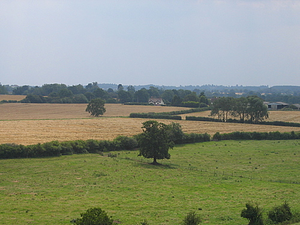
The terrain of Cheslovia is mostly flat towards the west, towards the east are a series of hills alled "The Kurai Hills" the biggest hill is Turi hill (Russian: Тюри холм, Tyoori Kholm, Cheslovian: Тйŏри Правŏ, Tyőri Pravő) it is about 124m high, the lowest point in Cheslovia is either the Kirov plains or Talimaa River.

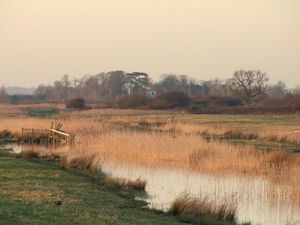
There are many plains in Cheslovia, the largest are the Cheslovian Steppes (also known as the Green Glades or Cheslovian Glades). The next largest plain is the Vsevolod plains in Soligorsk Krai.
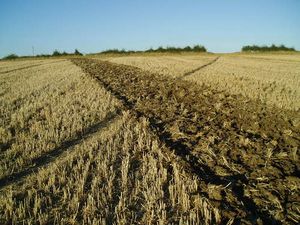
Climate
The climate of Cheslovia is mostly dominated by rain, in the summer, the weather is fairly sunny and hot, and in autumn, Winter and Spring the weather is wet, humid and rainy, normally there is snow in spring.
History
See also Past incarnations of Cheslovia
Cheslovia was founded on 11th March 2003 after it gained independence from a micronation called "The Tribe", The Tribe broke into two micronations Cheslovia (then known as The Amtin Federation) and The Noke Clan. In 2006 The Amtin Federation was reformed into a Kingdom called simply "Russland", the kingdom propered for a while until it was again reformed into a communist empire known as "The Confederate Empire of Versillies (CEV)", Versillies was a harsh communist nation, and the days of Versillian rule are often looked down upon by modern Cheslovia calling it "The Dark Days". During June of 2006, Versillies was reformed yet again into "The Empire of Kaznia", The Kaznian Empire claimed much land, but no or little sovereignty was ever inforced in much of it. During the Kaznian Empire, Kaznia had boosted relations greatly with neighbouring Zagoria, Chivaliers and the Noke Clan. During the time of the Kaznian Empire, Kaznian expanded greatly into surrounding area, but had claimed colonies all over the UK, it claimed territories in the Scottish highlands, Cornwall and the New Forest. During its claiming of the Northern Territories in the Scottish higlands, Kaznia established Fort Kozovberg to secure the area from hostile rebels who refused to join the empire. Kaznia claimed a territory in the New Forest, no ressistance was encountered as was the situation with the Cornish colonies.
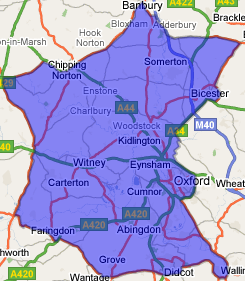
Soon after the Kaznian Empire was reformed into the Kaznian Federation (not to be confused with the current Cheslovian Federation), which consisted of various states that no longer exist, these states were established by Kaznia and resembled puppet states. The Kaznian Federation claimed much more land than the Kaznian Empire, which resulted in its demise.

The government of Kaznia quickly decided to return to the days of the empire, and created "The Second Order" also known as "The Second Kaznian Empire", the second empire claimed roughly the same amount of land, but had an extra region called Litov, and is just south of Modern Cheslovia (Litov was to be incorporated into the Cheslovian Federation as "Sakartvia"). On 25th december 2006, Zagoria (a neighbouring micronation), merged into the Second Kaznian Empire, and was renamed Zalya. On 25th January 2007, Cheslovia was made into The Kingdom of Kaznia, which only lasted for a week, and was quickly reformed into the short lived state of "Udmurtia", which was reformed into "New Latvia". New Latvia was renamed New Russia and then later Mygeeto. Soon during the days of Mygeeto, the Kaznian Rebirth occurred, in which the government tried to turn Mygeeto into a completely new state and forget about its troubled history, thus the Mygeetan government decided to make February 15th founders day, soon after Mygeeto's rebirth, it was renamed Kaznia again. During the first year of the Kaznian Rebirth, the nation was turned into a Principality (The Principality of Kaznia) was almost all aspects of pre-rebirth Kaznia were eradicated from Kaznian society, the effects of this can still be seen present day. The Principality of Kaznia is considered the final stage in the creation of modern Cheslovia, during the time of the Principality, the first diplomatic talks were held with other micronation who were not Old known micronations, the Kaznian Army was seen as much more modern than all previous military forces, with the acception of the Imperial Kaznian Military but only due to the plans that were created for military equipment. During the first few days of the Principality of Kaznia, The Clan declared various wars which (to modern standard) continued the Noke Wars. Apart from war, various successful and peaceful trade negotiation took place between Kaznian and a bordering micronation called Aramisia, a micronation which is widely considered a later version of Zagoria.
Soon the concept of war between The Clan, Aramisia and Kaznia became a vague idea as the Principality of Kaznia had established the "Union of European Micronations" (UEM), which was quickly shut down by North American micronations due to an "infringed copyright claim", before the UEM was shut down, The Clan was expected to join, however, upon presenting them with the treaty, they decided to completely merge with Kaznia, this was qwhen the "Noke Ethnic Group" was created. During July 2008, the Kaznian government decided to embrace its old complex and cultural history (this was called The Kaznian Revolution), and steps were taken to implement it into the Kaznian historical archives (now called the "Cheslovian National Archives"). Three months after the Kaznian Revolution, the Principality of Kaznia was reformed into the Cheslovian Federation, in the first few days of the new Cheslovian Federation the country had far less Republics and had no Collectives. The now that royalty had been removed from Cheslovia and replaced by democracy, the government could now show its socialist policies fully, the Social Industrialists created a new logo to illustrate Cheslovia new, modern appearance and updated its policies. To further shows Cheslovia's new democratic image, Urosh Dushanov allowed Yaana Kozhets to become governor of the Transylvakian Republic and was also eager to prepare for the November 1st Elections, allowing regular Cheslovian citizens to have the option of creating a political party eligible for taking part in the election and allowing independent "one man" political parties, the first "one man" party was created by Otar Kalev of the Terter Republic.
Throughout Cheslovian history, many reforms have taken place, the biggest was The November Reforms which lasted from mid November 2007 to 1st January 2008, the second biggest was the Great Revolution which lasted from 15th September 2007 to 6th October 2007 and the third biggest was the Second November Reforms which officially lasted for one day (1st November 2008) but plans were initially created one month prior and them implemented on the 1st November. On the 9th November 2007, Kaznia and another nation called Fristehen established North Atlantic Federation of Micronations.
On 29th December 2008 separatists from central Cheslovia began to form a break away nation known as "Izkaria", the Cheslovian government had since then informally called the central Cheslovian area Izkaria with no connection with the separatist movement. The Cheslovian government was quick to act and called for a security meeting held on the 30th December 2008, were the Cheslovian Federal government came to the conclusion that the separatists should be called nothing more then rebels and treat them like a rebellion rather than a nation. On the 30th December 2008 a bordering nation of Cheslovia known as the Principality of Malokaz had said that it will ally itself with the Cheslovian Federation. The Izkarians were defeated on 31st January 2009. On the 21st February 2009, the government established the New Cheslovia Territories, and area surrounding Stettin Republic that is home to the three other Cheslovian territorial claims including Uzkavistan, New Izkaria and Karak. On 7th March 2009 Cheslovia convinced the Baltian Collective Security Alliance to support the Republic of Molossia in the Somplenese-Molossian War of 2009.
On 14th March 2009, Cheslovia founded the European Micronational Culture Organisation (EMCO) to document the cultures of fellow European micronations, the establishment of the organisation later inspired North American micronations to establish a North American verson called the North American Micronational Culture Organisation, since then both organisations have signed a partnership agreement to encourage co-operation between European and North American micronations. On 15th April 2009, the Stettin Republic participated in the 90 Day Merger Deal with the USMR and became the Stettin Autonomous Socialist Republic.
During June 2009, the population of registered Cheslovian citizens increased greatly due to a government campaign aimed at people who are already known by Cheslovian citizens to join Cheslovia. This is the highest amount of registered Cheslovian citizens on record, at no other time in Cheslovia was there 50+ registered Cheslovians. The federal government also estimated that the population of non Cheslovian's living in the Cheslovian mainland was 35,796. This period of time is known as "Great June".
On 17th July 2009, the Republic of Arvas declared war on Cheslovia, the Cheslovian Federation emerged victorious from the war and as a result, helped to establish the Baltian Council and soon after, the Baltian Union. The Baltian Union quickly reformed into the Confederacy of Baltian States, soon internal problems of the Confederacy resulted in the Second Baltian War, a war unlike no other war in Cheslovian or Baltian history. The Second Baltian War regards the survival and reunification of the Cheslovian people, in order to create a strong nation. The war served the now independent nations well in that it allowed them to establish their own laws again, although the union was soon to be replaced by the Uzeishan Commonwealth (later known as the "Transbaltian Commonwealth"), unlike its predecessors the Uzeishan Commonwealth allowed each member state to withdraw almost without real hindrance, Cheslovia - a fonding member - was the first member state to succeed from the commonwealth.
Prior to 1st November 2009 the Cheslovian Federation had yet to show its democratic ideology, until the elections took place in which then-president Urosh Dushanov was voted out of power for the first time in Chelovian history, he was replaced with Otar Kalev, who gradually became renowned for his slightly unprogressive policy on running the Cheslovian government.
Between the years of 2010 and 2011 the was much confusion over what would become f Chesliva, some citizens thought the nation would dissolve, others thought it would merge with another micronation and some even tried to take over. However, the 2011 crisis was averted when Urosh Dushanov proclaimed martial law until the situation came back to normal. During this time he changed the national anthem. Recently, the government has proposed ideas of a new Cheslovian Empire or a new Federation based on the current form.
Government
See also Cheslovian government elections of 2009

The government of Cheslovia is a semi-presidential federal republic, run by both a President and Prime Minister, both share almost equal powers. In the government are five governors from the four Cheslovian Republics: Stettin, Milna, Transylvakia, Estovakia and New Izkaria, the governors are able to propose laws that apply only to their republic, however if the law they are proposing conflicts with a federal law, it cannot be enacted, but if it does not conflict with federal laws, then it can be enacted without the permission of the federal government.
Prime Minister - The Prime Minister is in charge of internal affairs, and also a key figure in the interaction with other Baltian States.
President - The President is in charge of external affairs, but is head of state and can also conduct internal affairs, as well as organising the cabinet of ministers by recommending them different jobs.
The government is styled as a socialist government, although the characteristics of socialism are not easy to see, this is because the nation is not far left, but rather only slightly left. This socialist form of government has been in existence since the beginning of the Principality of Kaznia despite the fact the nation was ruled by a King.
The Federal government
The Federal government holds supreme control over the nation, and can, if necessary, override the laws of the Republics. The Republics must not be seen as nations bound together for a common goal (like a confederation) but seen as as a type of administrative division of an indivisible nation, the governments of the Republics work independently to make their own laws, however each law that is created is reviewed by the Federal Government. If the law of that Republic conflicts with a Federal law (a law that applies for the whole of the federation) that law will not be approved.
The Musorov Kremlin

The Musorov Kremlin is the Parliament of Cheslovia, and consists of both the legislative and executive branches of the government. The Musorov Kremlin is situated inside Transylvakia, a Republic of Cheslovia, because of this, many other Republics have voiced concern over the possibilities that Transylvakia plays a secret major role in the Musorov Kremlin. This is denied by the Transylvakian Republic. The Musorov Kremlin also acts as the Parliament for Transylvakia, making laws for the Republic. Each Republic has its own Parliament.
Independence from the UK
During the time of the Principality of Kaznia, the concept of independence from the UK seemed completely possible and the government at the time was determined to achieve it. However after the Principality of Kaznia reformed into the Cheslovian Federation, independence was not at the top of the national agenda. Instead, the government understood and accepted that independence would not be achievable, or at least not achievable in the life time of its current citizens. It was decided that Cheslovia should pursue independence in the long term, but for the moment should only seek the status of "nationhood", this means to be recognised as a new group with a recognisable culture. Citizens have also undertaken separate courses at learning institutes concerning politics, economics, sociology and others. Despite this, Cheslovia still maintains its desire for a higher level of self reliance, and has carried on its farming project, which was initiated in 2007, during the time of the Principality of Kaznia.
Subdivisions
Cheslovia is made up of eighteen Republics (the equivalent of the USA States, with more autonomy), twenty one Krais (areas of no Cheslovian control, but still claimed) and fourteen Okrugs (areas of de-facto control). The Republics are further divided into Rayons. Most Cheslovian activity occurs inside the Republics where actual legal control of the territory is held.
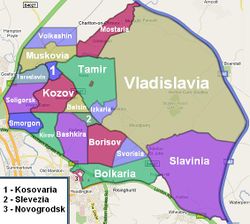
Republics
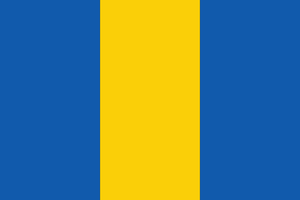

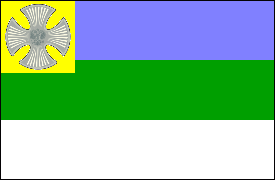
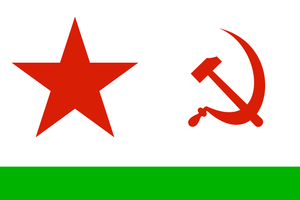
 Stettin
Stettin Milna
Milna Transylvakia
Transylvakia Estovakia
Estovakia New Izkaria
New Izkaria Serbovakia
Serbovakia Khanovaria
Khanovaria Gakra
Gakra Terteria
Terteria Slovaria
Slovaria Ignushia
Ignushia Naderachnya
Naderachnya Zviyadia
Zviyadia Skutaria
Skutaria Komra
Komra Batsara
Batsara Borislavia
Borislavia Molderia
Molderia Yukraya
Yukraya
Krais
 Beslau
Beslau Muskovia
Muskovia Kosovaria
Kosovaria Soligorsk
Soligorsk Smorgon
Smorgon Bashkira
Bashkira Borisov
Borisov Bolkaria
Bolkaria Mostar
Mostar Kirov
Kirov Kozov
Kozov Tamir
Tamir Slavinia
Slavinia Vladislavia
Vladislavia Novogrodsk
Novogrodsk Svorisia
Svorisia Slevezia
Slevezia Belsin
Belsin Izkaria
Izkaria Volkashin
Volkashin Taroslavin
Taroslavin Nadymski
Nadymski Gorodok
Gorodok
Okrugs
 South Kaznia
South Kaznia Valdisia
Valdisia Ivaria
Ivaria Uzkavistan
Uzkavistan Karak
Karak Uzen
Uzen Novi Uzen
Novi Uzen Bukovashnya
Bukovashnya Troshevak
Troshevak Svatopol
Svatopol Kadyrov
Kadyrov Bagapsh Lyes
Bagapsh Lyes Ankvab Polye
Ankvab Polye Chushkakul
Chushkakul
Collectives
 New Cheslovia:
New Cheslovia:  Stettin Republic,
Stettin Republic,  New Izkaria Republic,
New Izkaria Republic,  Karak Okrug and
Karak Okrug and  Uzkavistan Okrug
Uzkavistan Okrug Yakuria:
Yakuria:  Khanovarian Republic and
Khanovarian Republic and  Mountainous Republic of Gakra
Mountainous Republic of Gakra
 Kesel (The Joint Territory of Kesel) - established 19th June 2007, shared by the Cheslovian Federation and the Republic of Molossia
Kesel (The Joint Territory of Kesel) - established 19th June 2007, shared by the Cheslovian Federation and the Republic of Molossia
The actual sovereign areas of Cheslovia are the Republics, these are area that have actual ownership by Cheslovian citizens. The Krais and to some degree the Okrugs are areas claimed but not under any legal control, India has a similar case in that it claims Kashmir from Pakistan, though this is not legal.
The Republics
Although Cheslovia is de-facto composed of its Krais, Okrugs and Republics, it is de-jure only composed of Republics, and much Cheslovian activity that occures within the nation happens in the Republics, where all sovereignty is held. Republics do not have a constitutions but instead have "Kruugs" (Cheslovia: Крўўгўш, Krűűgűsz), which is similar to a constitution in that it has laws, acts and policies concerning the Republic.
| Republics of the Cheslovian Federation | |||||||
|---|---|---|---|---|---|---|---|
| Flag | Republic's Conventional Long Name | Republic's Conventional Short Name | Date of establishment | Anthem of the Republic | Capital | Governor | |
| 1 | 
|
Stettin Republic | Stettin | 1st November 2008 | Preussen Gloria | Serov | Iigon Dzyozhov |
| 2 | Milna Republic | Milna | 1st November 2008 | Polyushka Polye | Grozno, Milnian Parliament | Ilya Bogdanov | |
| 3 | 
|
Transylvakian Republic | Transylvakia | 1st November 2008 | Ey, Yablochko | Musorov, Transylvakian Parliament | Yaana Kozhets |
| 4 | Estovakian Republic | Estovakia | 1st November 2008 | The Cossack's Song | Musorov, Estovakian Parliament | Margarid Karinovak | |
| 5 | 
|
Republic of New Izkaria | New Izkaria | Information missing from archives | The Song of the Volga Boatman | Vasyugan | Iigon Dzyozhov |
| 6 | Serbovakian Republic | Serbovakia | 2nd April 2009 | Let's go! | Nazarovo | Aivan Yakov | |
| 7 | 
|
Khanovarian Republic | Khanovaria | 4th May 2009 | Korobushka | Koriska | Viyoleta Zilinskas |
| 8 | Mountainous Republic of Gakra | Gakra | 4th May 2009 | Sacred war | New Gori | Vaya Skorodas | |
| 9 | Terter Republic | Terteria | 16th May 2009 | Raspryagayte khloptsy koni | Musorov, Terter Parliament | Ena Kheynov | |
| 10 | Slovar Republic | Slovaria | 16th May 2009 | The Guard song | Slavika | Vanes Deyanovich | |
| 11 | 
|
Ignush Republic | Ignush | 23rd May 2009 | Pro Russian Chechen anthem | Chornik | Iingrid Bayinov |
| 12 | 
|
Naderachen Republic | Naderachnya | 23rd May 2009 | Ode to joy | Terenozek | Anechka Vakhanovak |
| 13 | Republic of Zviyadia | Zviyadia | 12th July 2009 | When Johnny comes marching home | Grozno, Zviyadian Parliament | Tanya Kasyarsukovak | |
| 14 | 
|
Skutarian Republic | Skutaria | 15th July 2009 | Mening Qazaqstanym | Sovropol | Currently unknown |
| 15 | Republic of Komra | Komra | 16th October 2009 | Soviet Naval Guards march | Musorov, Komran Parliament | Yuri Veshkov | |
| 16 | Borislav Republic | Borislavia | 16th October 2009 | Soviet March | Siiktivkar | Pending | |
| 17 | Republic of Batsara | Batsara | 16th October 2009 | Red October hymn | Musorov, Batsaran Parliament | Oleg Uvanevas | |
| 18 | Republic of Molderia | Molderia | 22nd November 2009 | Anthem of Tajikistan | Balkanovak | Vladich Koroshov | |
Rayons
Main article, List of Rayons
The Rayons that make up the Republic are areas where specific laws apply, for example one law my apply in Stepenakert Rayon (such as non smoking) whereas in Kutaisiyai Rayon smoking is permitted. Although the Rayons have no form of self governance, they are controled directly from the Republic's Parliament, it is the Governor who decides whoch laws apply in which Rayon.
Republics, or nations?
Republics are in a sense nations in their own right, considering that they can create their own laws and have their own varying culture, however they do not have the right to independence from Cheslovia or to conduct their own foreign affairs, similarly to the republics of the Russian Federation.
The Federal Government states that they should not be seen as nations bound together for a common cause. Because this implies that each one used to be a country, which is not true, they were all established by Cheslovia.
Krais
The Krais are areas of absoloutely no legal or recognised control, they are claimed for the purpose of possible future independence of Cheslovia so that the Krais can become part of the independent Cheslovia. The Krais are completely under British control, but very occassionally, parts of the Krais become temporarily controled by Cheslovia. They are also claimed because of their historical significance in Cheslovia, they have seen many different Cheslovian operations such as explorations, and even some conflicts, such as The Noke Wars of 2006 and much of modern western Cheslovia was part of the sprawling Kaznian Empire of 2006.
Okrugs
The Okrugs are areas of no legal control, but have much Cheslovian activity inside them making them under de-facto control. The Okrugs are small enough to enfource almost complete control over despite them not being legaly part of Cheslovia unlike the Republics. They can informally and very loosly be regarded as "50% independent" whereas the Republics are 99.9% independent, the remaining 1% represents the recognition that is needed from Britiain, the 99.9% represents the legal control the Cheslovian nation has over the territories.
Collectives
Collectives are areas with three or more Cheslovian territories (with the exception of the Cheslovian mainland, the area which contains Musorov). These are not actual administrative divisions, only areas which have a collective name (hence the name "Collectives"). Collectives are similar to Districts, which apply only to the Cheslovian mainland.
Districts
There are five districts (also known as Sectors) in Cheslovia:
- North District: Muskovia and Kosovaria
- West District: Soligorsk and Smorgon
- Central District: Kozov, Bashkira, Kirov and Ivaria
- South District: Borisov, Bolkaria, Valdisia, Transylvakia, Estovakia and Novogrodsk
- East Disctrict: Mostar, Tamir, Vladislavia and Slavinia
Foreign relations and military
Foreign relations
See also Foreign relations of Cheslovia
The Cheslovian Federation recognises seventeen micronations, but is currently only recognised by thirteen nations, these nations are:
Nations with mutual recognition
- Republic of Molossia
- Kingdom of Fristehen
- Republic of Gemnoviag
- Commonwealth Republic of Avalon
- Kingdom of Rouxan
- Nation of Sweet
- Principality of Cakeland
- Principality of Malokaz
- Kingdom of TwoChairs
- Grand Duchy of Flandrensis
- Republic of Petorio
- Kingdom of Camuria
- Union of Socialist Micronational Republics
- Kingdom of Ud Mahazar
- Grand Lamate of Sandefreistikhan
- Socialist Republic of Murrayfield
- Republic of Arvas
Three of these nations are members of the NAFM.
Nations recognised by Cheslovia
- Scientopia
- Federal Republic of St. Charlie
- Empire of New Europe
- Kingdom of Altania
- Empire of Qootärlænt
- Sacred Republic of Plau Zuiru
- Republic of North Altania
- Free Empire of Ja'Wiojan
- Democratic Duch of Francisville
- Rudea Federation
- Marxist People's Republic of Burkland
Military
The Cheslovia military is the KDI (Kaznian Defence Initiative), subdivisions include KDI army, KDI Border guard division, KDI Mechanised Infantry and the KDI air force. Cheslovia also has a NAFMDA Battalion, which is used to defend NAFM territories, the NAFMDA is operated by the NAFM, but each NAFMDA Battalion has a certain amount of "autonomy". The KDI are equipped with Cheslovian "Kalash" rifles (which are a type of Cheslovian Splinter Gun), and their uniform is: Black hat, black trousers, black shoes, beige shirt, long kharki coat.
Splinter guns
Splinter guns are a Cheslovian weapon used for defence and sport, they fire a small piece of wood. There are three types of Splinter guns:
Kalash
Standard issue splinter gun for the KDI.
Stettin rifle
Used by special groups of KDI troops, they are faster to reload than Kalash rifles but are harder to manufacture and are more bulky than Kalash rifles.
Stump gun
Stump guns are crudely made splinter rifles used for sport, they are known for technical errors such are failure to fire and even back firing on the user.
Economy
The Cheslovian economy is based around farming and mining, Cheslovia mainly relies on England to supply food, water and electricity, but as time goes on, Cheslovia will become more self reliant. The currency of Cheslovia is the Cheslovian Oubel (€k) one Oubel is worth exactly one British Pound Sterling.
The Musorov Stock Exchange

During mid 2008, the Cheslovian government set up the Musorov Stock Exchange (MSE). The MSE values Cheslovian companies and adds their value to the Cheslovian money circulation, for example, Kazkom is worth €k100,000, thus €k100,000 would be printed and added to the Cheslovian money circulation. A company is valued by its out put of products/services, activity and size.
A company can either be privately or publicly owned, if it is publicly owned the profits of the company goes to the government, however if it is privately owned the profits goe to the owner of the company.
Shares can also be bought at the MSE, however price goes up depending on the value of a company.
Problems of the MSE
The MSE has had much critisizm for its demand of a new Company Policy that make it illegal for any Cheslovian company to be unregistered with the Cheslovian government. It is also notorious for its large and some what unecessary bureaucracy. The latter made it harder for the MSE to work and is still struggeling to operate correctely.
Economy of the Republics
The Republics are allowed to tradewith each otehr as if they where independent nation trading. This allows for them to set their own tariffs on imported good from the Republics. All Republics deal in Cheslovian Oubels, they are not allowed to have their own currency.
Profits obtained by Republics
Trade is needed between Republics in order to make profits so that the Republic can purches goods or services from the federal government such as food, drink, equipment for Republic Guard Regiments and Software Installation teams, used for installing programs on Republic Parliamentary computers. Profits are obtasined in Oubels, British Pound Sterling or Euros.
Culture
See Culture of Cheslovia for more information
Cheslovian culture is based around Russia, such as symbols, architecture and place names, Cheslovia also has a slight German culture, Celtic culture and Pakistani culture due to various ethnic minorities, but Russian culture dominates much of the country. Cheslovia has also adopted the Russian language as an official language of Cheslovia, it is spoken most of the population. Cheslovia has one constructed language and two alphabets based on Russian. Places in Cheslovia have been named with Russian sounding place names such as Musorov, Isevolod or Smolnya.
Languages
In Cheslovia there are many constructed languages, which belong to the Baltiak Language Group, such as Tamirian (Таминохчүй), Kosovarian (Кәзожниһ), Cheslovian (Чесловискаи) and many others, many of these languages however are not official languages.
Sport
Football (soccer) is the nations biggest sport. A large rivalry between Dynamo Kirova and Locomotive Musorov has existed since the two teams were created in early 2007. Another popular sport if a Stettinian made sport called So' (pronunced as if to say French word "bon" but replace "b" with "s").
Religion

The state religion of Cheslovia is Roman Catholic (during the 2006 Cheslovian Empire, the official religion of Orthodox Christianity), however, any religion may be practiced in Cheslovian borders. A Cheslovian religion is "The Cheslovian Pagan Church" also known as "The Dangusov Church", this is practiced by a large majority of Cheslovian citizens.
Music
Many Cheslovian citizens are able to play the piano, a famous piece conducted by the famous Vasili Uladimov called "Кўра Мўўсоров" (English: "The City of Musorov") in early 2007 uses only the right hand keys C# D# F# G# A#. Apart from this the Grunge, Heavy Metal and Hard Rock genre of music is popular in Cheslovia, bands such as Korn, Slipknot, Nirvana and many others are listened to by a large portion of the Cheslovian population. However, classical music is also listened to such as Sergey Prokofiev's "Dance of the Knights" and many Russian songs composed by the Red Army Choir are listened to. On 2nd April 2009, Cheslovia had its first Nu Metal band called Dark Horizon.
The national anthem of the Cheslovian Federation is named "God be with you, land of Cheslovia" and in Cheslovian it is: Годă ўўш мăх мазăлих, някаквихора Чесловийа! and pronounced Godar ursh markh mazarlikh, nyakakvikhora Cheslovia. The national anthem of Cheslovia was adopted in early 2008 as the Ukrainian anthem.
Aesthetics
There are a number of valuable aesthetics in Cheslovia such as books, paintings and sculptures. The Musorov Art Gallery holds some good works of art produced by Vasili Uladimov, paintings such as "Mutulup, the rhino of the damned". Sculptures include the Drakon Statue that can be seen in the Musorov National Park, or the unamed sculpture that is kept in the Musorov Kremlin which looks very similar to a skull.
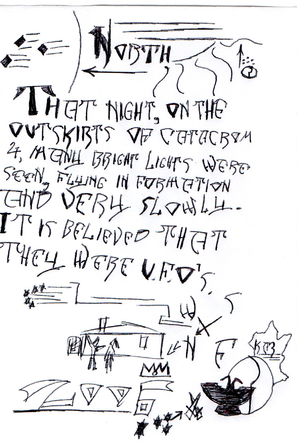
On 22nd May 2009, the historical "Starizhodis" papers were found deep in the Cheslovian National Archives. These papers were created during the time of the Kaznian Empire and documented various occurrences such as the Battle of Blue Bell Woods, the Catacrom 4 UFO phenomena and the Noke Wars.
Cultures is defined as the shared beliefes, attitudes and values of a society. The Cheslovian people have done to same and created shared values, attitudes, morals and beliefs. For example, previously atheist people became members of the Kaznian Pagan Church because of its lack of a god and holy text and its inclusion of scientific theories.
References
- ↑ Based upon number of English citizens living per square kilometre
|
|---|
| History | The Federation • Confederate Empire of Versillies • Kaznian Empire • Second Order • Kaznian Rennaisance |
|---|---|
| Geography | National parks • Terrain • Rivers • Cities |
| Economy | Cheslovian Oubel • Cheslovian Companies |
| Government and politics | Administrative divisions of Cheslovia • Political parties • Foreign Relations • Education |
| Culture | People of Cheslovia • Flag of Cheslovia • Cheslovian language • Languages of Cheslovia • Baltian Sector • Music of Cheslovia |
| Military | Conflicts involving Cheslovia • Awards and decorations of Cheslovia • Organised and controlled warfare concept |
| International participation | European Micronational Culture Organisation • North Atlantic Federation of Micronations • Baltian Collective Security Alliance • Baltian Economic Cooperation Agreement |
| |||
|---|---|---|---|
| Existing nations
| |||
| Extinct nations
| |||
| Seperatist groups
| |||
| Seperatist groups no longer active | |||
| Nations associated with Baltian sector
The Tribe, |

